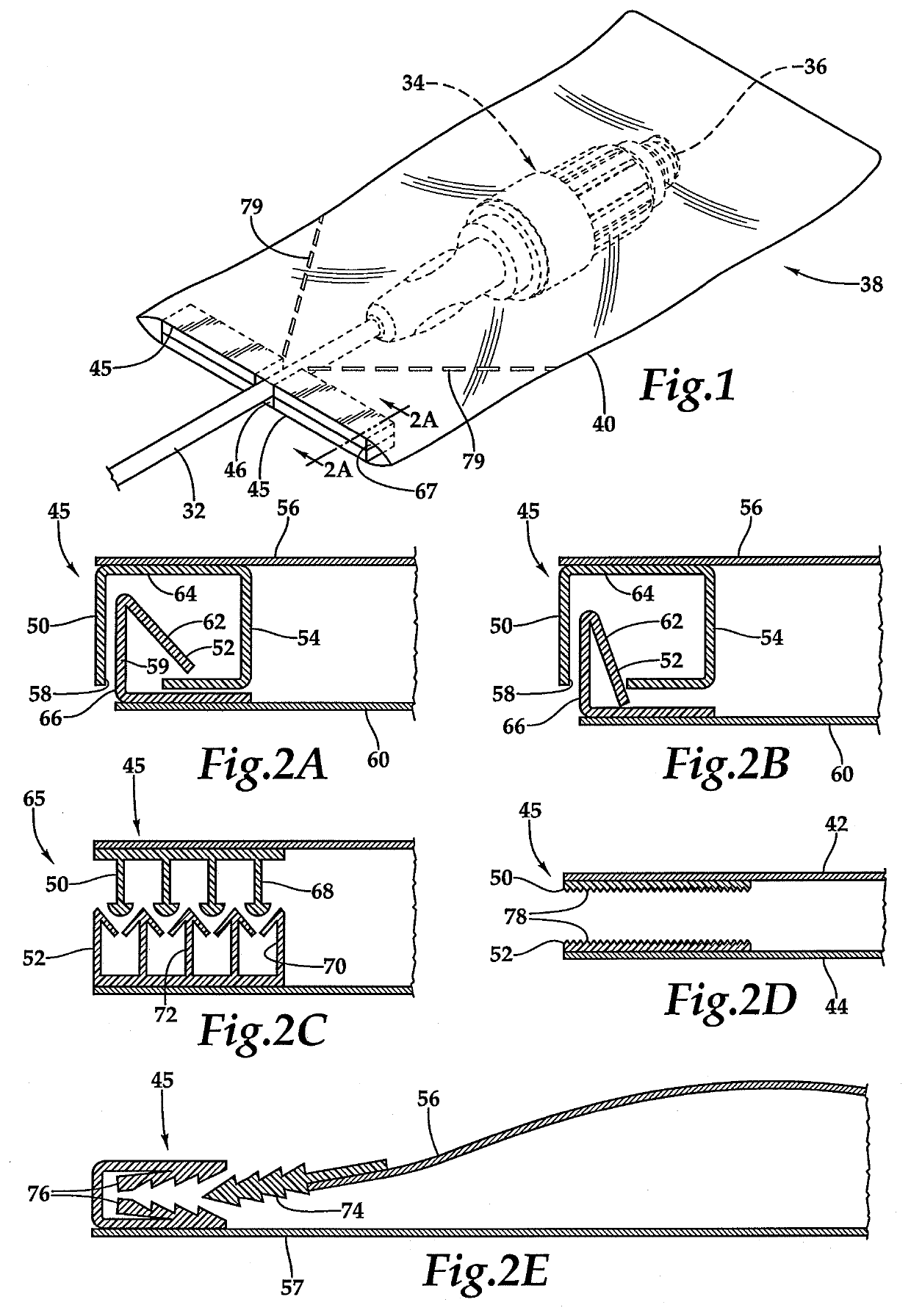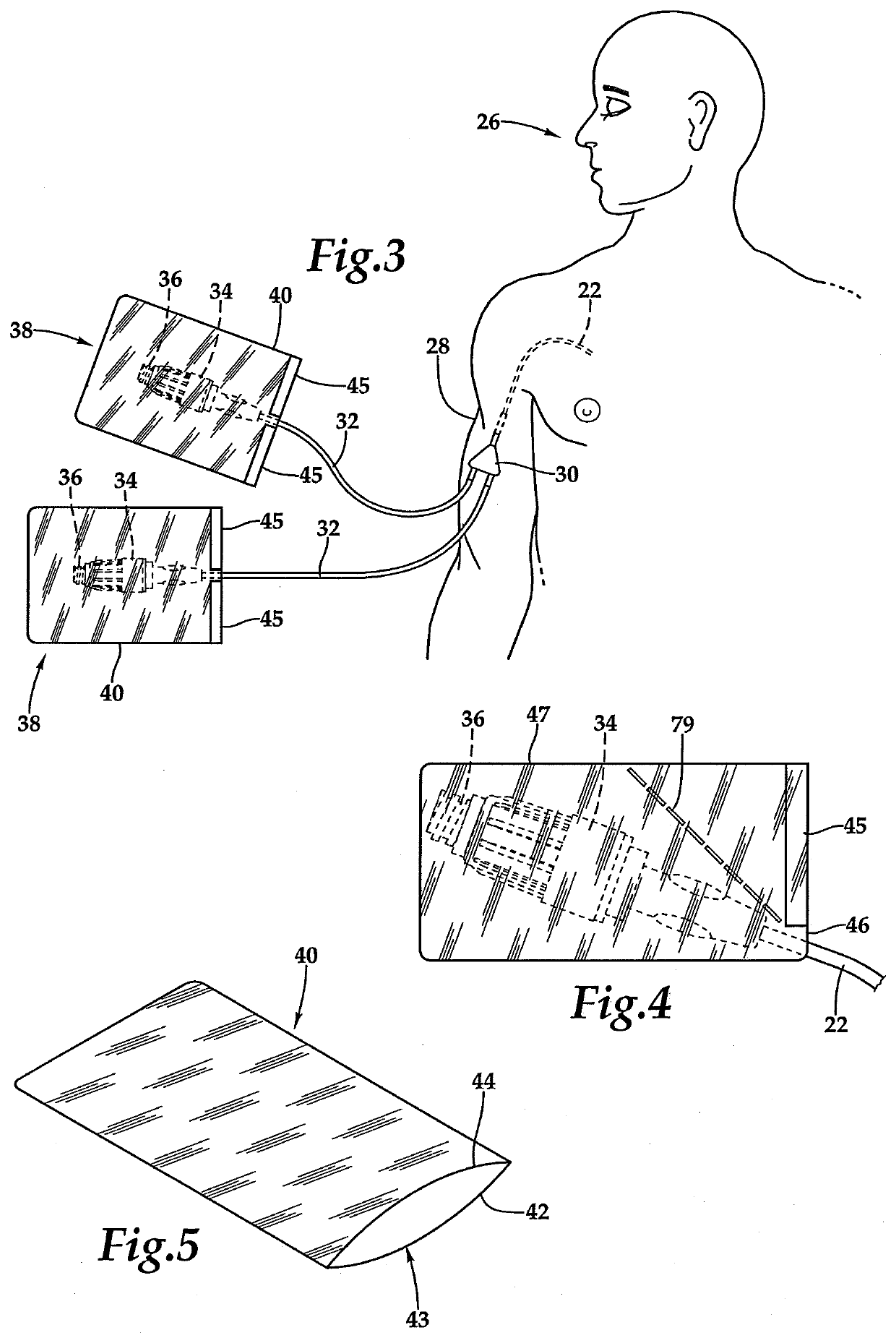Locking Bag Forming Peripherally Inserted Central Catheter (PICC) Guard
a central catheter and locking bag technology, applied in the field of catheters, can solve the problems of drug overdose and death, serious hazard for outpatients, and ease of intravenous access for users of intravenous drugs such as heroin
- Summary
- Abstract
- Description
- Claims
- Application Information
AI Technical Summary
Benefits of technology
Problems solved by technology
Method used
Image
Examples
Embodiment Construction
[0020]Referring more particularly to FIGS. 1-5, wherein like numbers refer to similar parts, a Peripherally Inserted Central Catheter (PICC) assembly 20 is shown in FIG. 3. The PICC assembly 20 has a flexible catheter 22 which is inserted into the upper extremity 24 of the patient 26, for example, an arm 28. The catheter assembly 20 will typically have a PICC line base 30 from which the catheter emerges and enters the patient through the skin. The PICC line base 30 is positioned to hold the catheter against movement by attachment to the patient, for example, by tape. One or more injection lines 32 extend from the PICC line base 30, each of which is terminated by an inlet port 34. The inlet ports 34 provide entryways to the injection lines 32 for delivery of fluids from an injection source such as a syringe or a total parenteral nutrition bag or whatever injectable the patient requires. As shown in FIG. 3, the inlet ports may be provided with an inlet side positive displacement conne...
PUM
 Login to View More
Login to View More Abstract
Description
Claims
Application Information
 Login to View More
Login to View More - R&D
- Intellectual Property
- Life Sciences
- Materials
- Tech Scout
- Unparalleled Data Quality
- Higher Quality Content
- 60% Fewer Hallucinations
Browse by: Latest US Patents, China's latest patents, Technical Efficacy Thesaurus, Application Domain, Technology Topic, Popular Technical Reports.
© 2025 PatSnap. All rights reserved.Legal|Privacy policy|Modern Slavery Act Transparency Statement|Sitemap|About US| Contact US: help@patsnap.com


